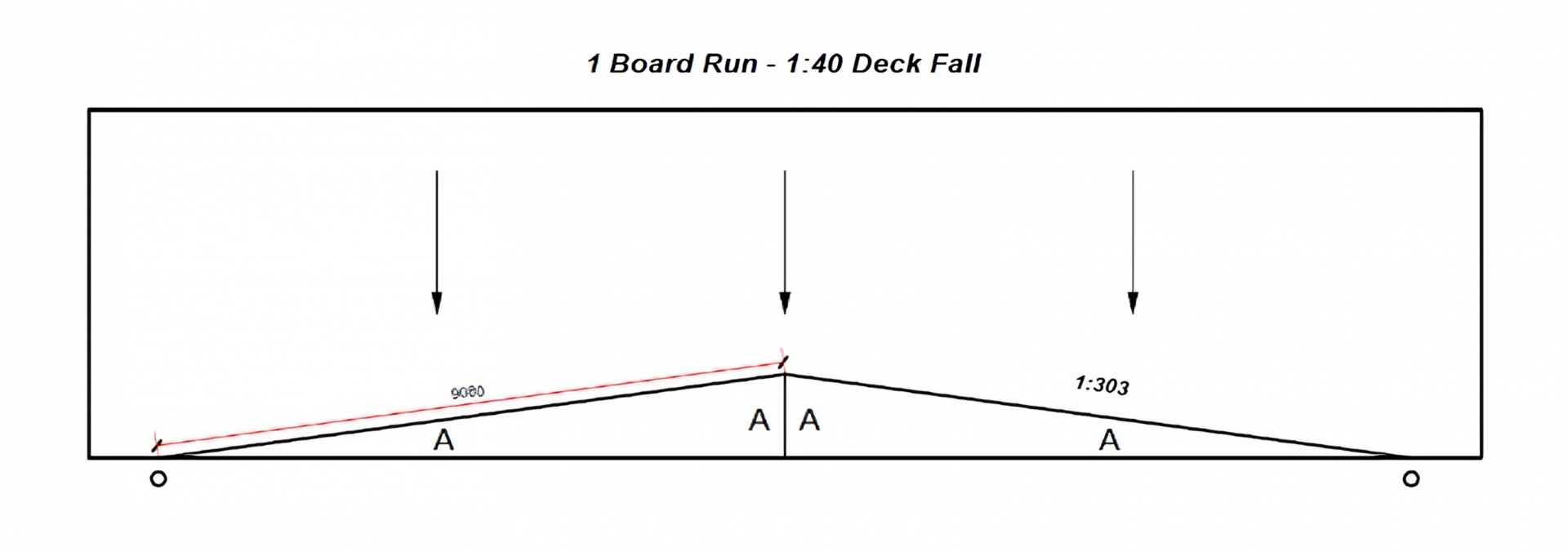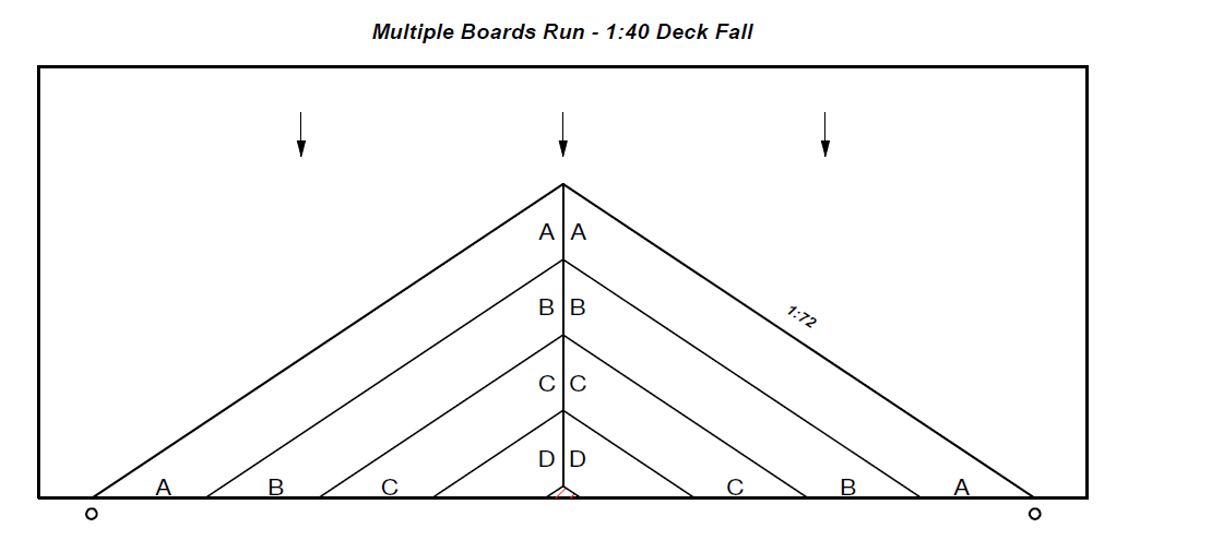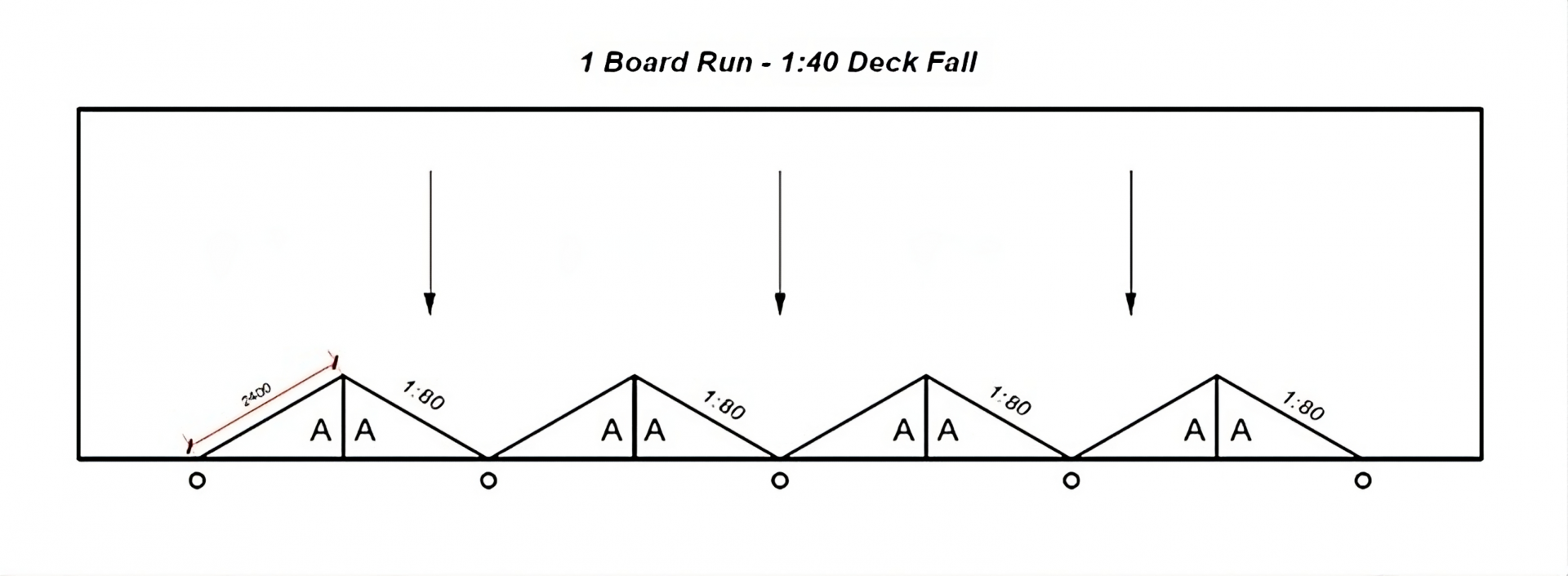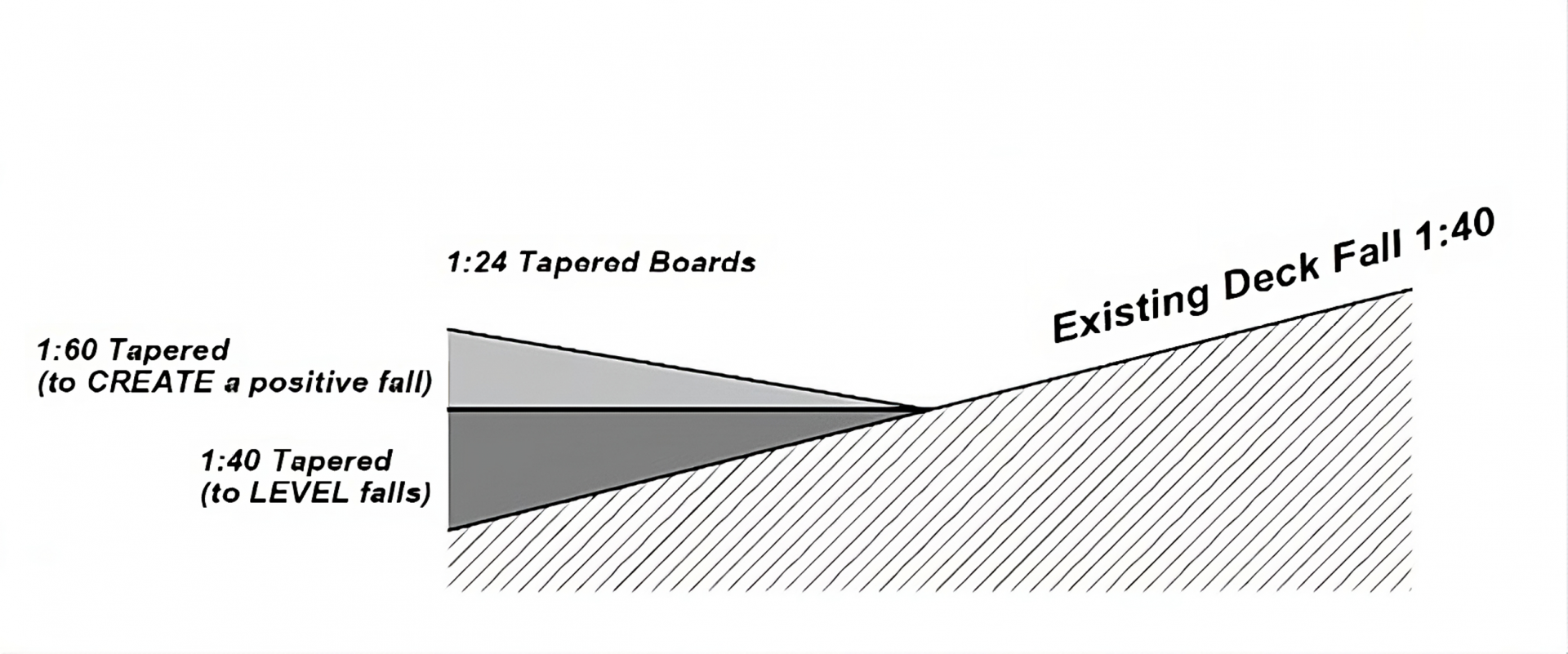FLAT ROOF CRICKETS - Explained
What Are Flat Roof Crickets And Why Are They Used?
Roof crickets can be an effective method in aiding water drainage on low pitched roofs that are prone to ponding water and when designed correctly can help to prevent water pooling between rainwater outlets. Their layouts on a roof plan are typically shown on a roof surface in a triangular, wedge-shape or diamond shaped formation and are composed of tapered insulation or timber firrings. Crickets appear to be more common in mainland Europe on projects with tilted roof decks and with large distances between outlets; however, they are becoming more common in the U.K. as their introduction can be beneficial on many project types.
It is best practice to avoid ponding water on roofs and from a regulatory standpoint Building Regulations, Part H specifies that suitable arrangements must be taken to avoid ponding rainwater on a roof. Further to this, according to documents BS 6229 and BS 8217, flat roofs should all accommodate a finished fall of 1:80.
Potential issues
Common issues with standing water are reducing the life expectancy of a roof, progressive deflection of the deck, increased water ingress if the waterproofing is punctured, increased chances of blocked outlets, reduction of maintenance access and the potential to invalidate warranties.
Poor design of crickets can result in inadequate drainage as the final finished fall can be overlooked when designed.
Effective Roof Drainage
Roof crickets can be custom-made to accommodate various roofing applications. The size and fall of these crickets should be determined by the slope of the deck that the crickets are to be installed over.
To ensure a flat roof cricket performs correctly the finished fall that has to be achieved is calculated taking into consideration the following: the fall of existing roof, the fall of the cricket to be applied to the roof (typically provided by tapered insulation boards), the length of the mitre line created by the cricket which is largely affected by the angles created by the cricket and the distance between the outlets.
In the most common scenario that we see specified, metal deck roofs are pitched to a 1:40 (2.5%) fall and one tapered board is requested to help direct rainwater to the outlets (see image 1). In this case, as in image 1, the outlets are 18 meters apart and the fall along the valley created is 1in303 only when utilising a 1in24 tapered board.
Image 1

In the same scenario, to ensure the water is draining correctly, a larger cricket would need to be introduced. Image 2 below also utilises 1in24 tapered boards creating a 1in72 fall along the valley line.
Image 2

Alternatively introducing more drainage points would help in reducing the crickets’ size as shown in the example below (image 3).
Image 3

When selecting the tapered boards required for a cricket system, it is important to recognise that the fall on the tapered board would likely need to be greater than the current fall within the deck or existing falls that the crickets are being installed upon. Image 4 shows how a 1in40 board over a 1in40 deck would simply flatten out the roof therefore a further fall would be required to direct the water in a positive direction.
Image 4

Our TaperedPlus design team offers a specialized design and manufacturing service. We can provide the necessary expertise and guidance to answer all the critical questions. With our bespoke solutions, you can ensure that the cricket is constructed with the appropriate materials and designed to accommodate the specific waterproofing system of your roof. Moreover, we can assess the existing slope of the roof and recommend suitable adjustments to achieve the required fall for optimal performance.
While crickets may be considered a secondary application, when designed and installed properly, roofing crickets have the potential to significantly prolong the lifespan of a roof. They offer a cost-effective remedy to a prevalent issue in roofing. Please contact TaperedPlus technical@taperedplus.co.uk for more technical advice.
